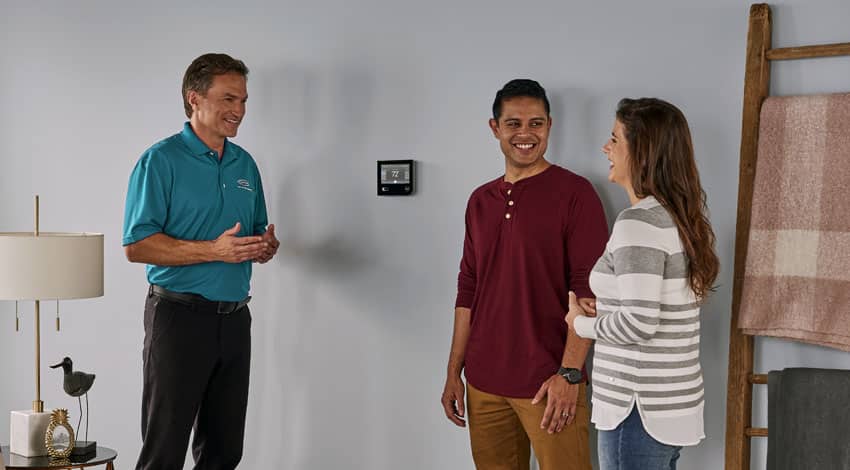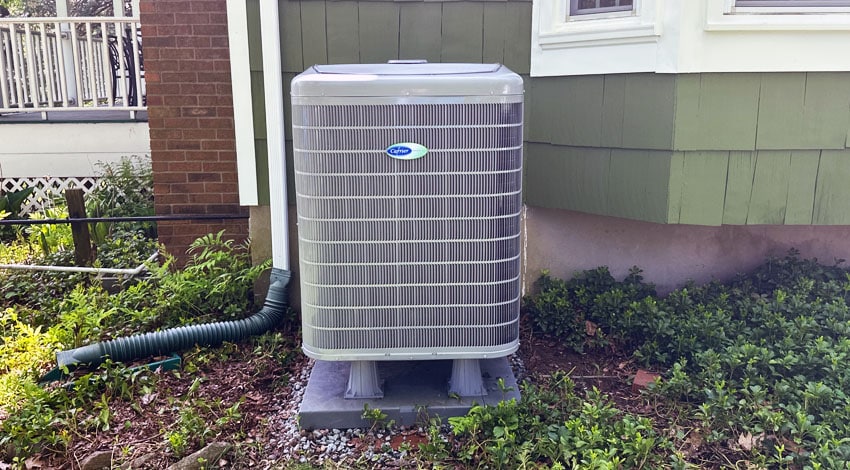The most common types of furnaces residents heat their homes within Central New Jersey are with either a natural gas furnace, propane furnace, oil furnace, or heat pump. The average cost of a new gas furnace ranges from $3,500 to $15,000 to install. The upfront cost might not seem the least expensive option, but more modern systems can be very energy efficient, and the fuel cost is much cheaper. Your home does need a gas line or propane tank.
The average cost of a new oil furnace cost between $2,500 and $8,500 to install, but these systems can be inefficient compared to gas furnaces. The installation cost will be lower, but energy costs will be higher, as much as three times higher than gas or electric furnaces. They also require a storage tank on the immediate property and more maintenance vs. other heaters.
Oil furnaces can be useful in more remote regions where utilities are harder to access, and in colder climates because it provides more heat per BTU than other solutions.
Understanding heat efficiency rating
It is essential to understand what annual fuel utilization efficiency is and the ongoing energy use when considering purchasing a new unit. When comparing energy sources for home heating, we measure for annual fuel utilization efficiency or AFUE.
AFUE ratio is how much heat output a furnace system will produce compared to the amount of energy it consumes.
For example, if a system carries a 90 percent AFUE rating, that means 90 percent of the energy it uses translates directly to heat output, while the remaining 10 percent of energy is lost to inefficiencies, such as heat loss or escape.
Natural gas furnace AFUE ratings are as high as 90 to 97 percent, while oil Furnace AFUE rating is between 80 and 90 percent. When comparing gas vs. oil prices, gas is by far the cheaper fuel source and the most efficient.
Over time you and your family will save money switching over to natural gas or heat pump over an oil furnace. Natural gas prices seem to decline year to year vs. o.il prices, which have been on the rise yearly.
Gas heating systems work fairly simply
1. Fuel supply
Your home will need either a gas line or a propane tank. Since natural gas is combustible and leaks in a gas pipe may result in a fire or explosion, this should be installed or replaced by a licensed, professional HVAC company or, in some areas, a licensed pipefitter or plumber.
2. Furnace startup
When your thermostats fall below a certain programmed temperature, a signal is sent to the furnace to switch it on. A permanently lit pilot light or an electronic ignition then ignites the natural gas burner. Lighting and combusting the natural gas at the burner.
3. Heat exchange
Shortly after the burners have started and has reached a high enough temperature, a blower fan will start to introduce air to the heat exchanger. This allows the air to be heated without coming in contact with the actual flame or burner area. Once it reaches a sufficient temperature, the air warmed by the heat exchanger is then forced through the home’s ductwork, supplying warm air to the house
4. Furnace shutdown
When a thermostat senses that the home’s temperature has reached the desired level, it sends a signal to the furnace to end the heating cycle. The gas valve is shut off, putting out the flames. The blower will continue to operate for a short time to ensure that all the available heat has been retrieved from the system.
From our experience, fewer companies are servicing and maintaining oil furnaces, and the few that do have a prime cost vs. other units. If your home can not get a gas line, look into getting a heat pump over your oil furnace.





